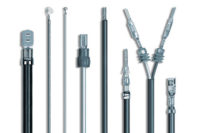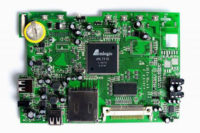DUBLIN—The global aviation connector market will grow at a steady 5 percent annual rate over the next decade, according to a recent study conducted by Fact.MR, a market research firm.
“Amid the coronavirus pandemic, production channels are witnessing a steep decline in operations,” says Ram Singh, associate consultant at Fact.MR. “However, government strategies to recover the economic loss of COVID-19 will present gainful opportunities through 2030.”
According to Singh, a surge in new air travelling routes and a substantial increase in frequency of existing routes will continue to bolster growth for the aviation connector market.
“Fiber optic connectors are the most [lucrative] product type, with more than 30 percent share of the total market value,” claims Singh. “Upgraded safety features and prominence of in-flight entertainment are driving demand for these connectors.
“High-speed connectors also offer lucrative growth opportunities, with 7 percent annual growth through 2030,” Singh points out. “The need for increasing data transmission speeds to cater to an exponential increase in air traffic will drive demand for high-speed connectors.”
Circular-shaped connectors currently account for two-thirds of demand. “The prevalence of circular geometry in aircraft parts and propulsion components are central to growth in this segment,” says Singh.
“Rectangular aviation connectors are an upcoming category that match the new designs of modern aircraft,” adds Singh. “This segment will continue to capture market share [through the end of this decade].”
Singh predicts that the business jet sector of the aviation market will exhibit the strongest demand for wire and cable connectors in the near future.
Major players in the aviation connector market include Amphenol Corp., Bel Fuse Inc., Carlisle Companies Inc., Conesys Inc., Eaton Corp., Fischer Connectors SA, ITT Corp., Rosenberger Group, Smiths Group PLC and TE Connectivity.



